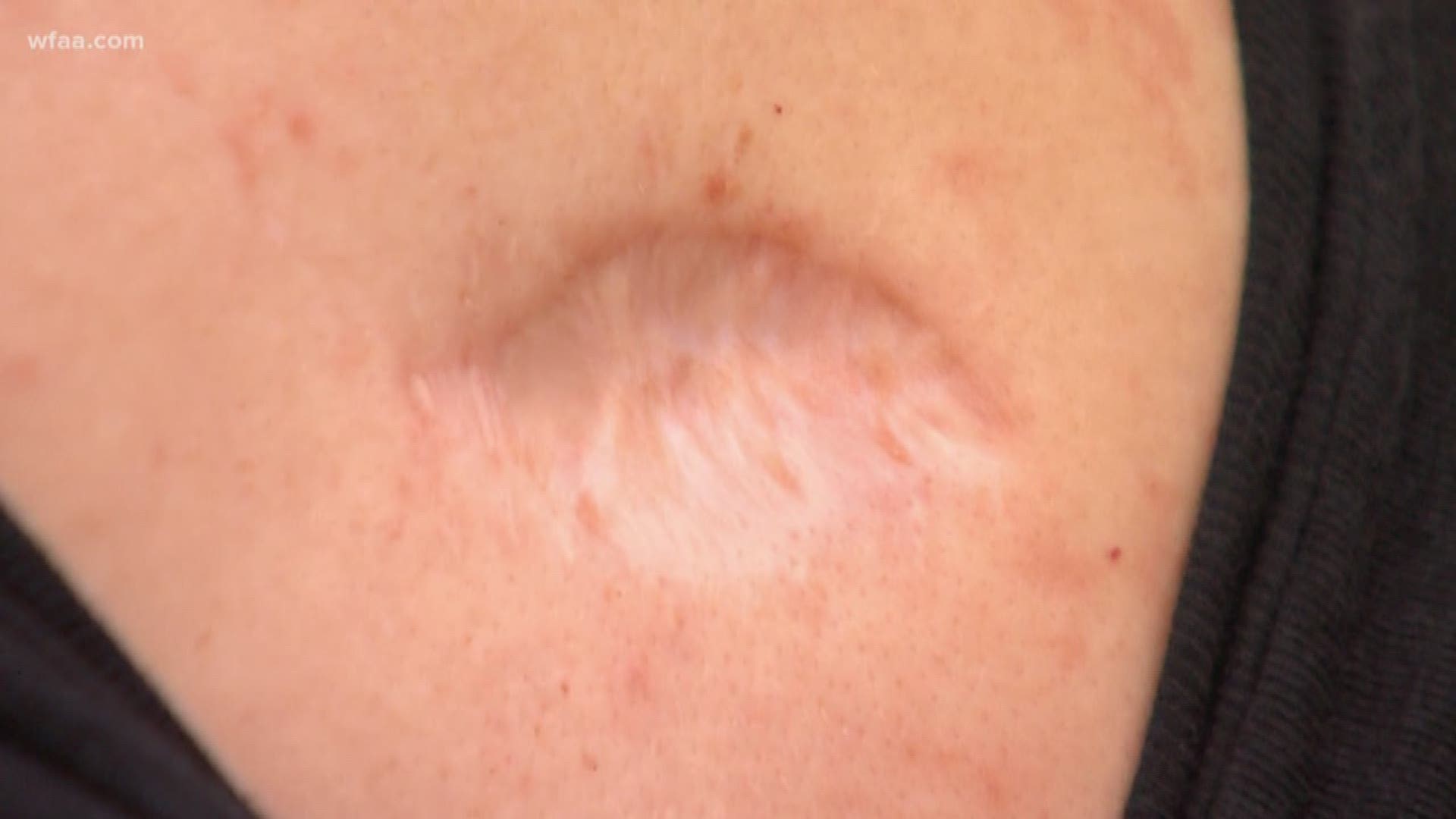OVILLA, Texas — “I embrace them,” Julie Frampton said of the 24 scars she has all over her body. The largest one is on her back.
“I tell people it’s a shark bite,” she said, laughing.
It’s a wound from a war she’s still fighting – melanoma. Frampton was diagnosed with the most aggressive form of skin cancer when she was 34 years old.
Her daughter spotted a bloody mole in between her shoulder blades. The removal of that tumor caused the scar she calls a shark bite.
Since that diagnosis, Frampton has seen a board-certified dermatologist every 90 days. She also does monthly skin checks on her own, and that is how she knew, at age 36, that melanoma had returned in a place that gets absolutely no sun exposure – her genitals.
“I did my monthly exam and I found a spot,” Frampton said. “It was jet black, tiny, looked like the tip of a pen had you put it on a piece of paper, and I was very fortunate that I caught it.”
“Melanoma doesn’t care, it goes everywhere, other than your teeth or your hair, everywhere,” she said.
Early detection is the reason Frampton is alive. She has spent the last few years raising money for melanoma research and spreading the word about the dangers of sun exposure and how we should all protect ourselves.
“Know your body,” she said, “and do a monthly skin check. It takes 10 minutes. Get a mirror, look in all the nooks and crannies. Skin is one sheet of paper from the tip of your head to the bottom of your feet if you could roll it out. And anywhere you’ve got skin, you can have a potential issue.”
May is Melanoma Awareness Month, which gives her more ammunition to share the five things all of us need to look out for, known as the A, B, C, D, and E’s of melanoma.
“A for asymmetrical, B for border, C for color, D for diameter - so if it’s bigger than the size of a pencil eraser, you need to get that checked. And E for evolution – whether or not it’s changing. Is it getting bigger or smaller? That’s what you need to look for,” she explains.
Melanoma doesn’t discriminate. Age, gender, skin color doesn’t matter. Anyone can get it, and Frampton worries every day that she’ll get it again.
“So, every 90 days it’s like throwing a grenade out there and you don’t know if it’s going to land or not,” she said. “I feel like I was given a second chance at life and I feel like I need to do something with that.”
For additional information about melanoma, visit AIM at Melanoma or the American Cancer Society.

